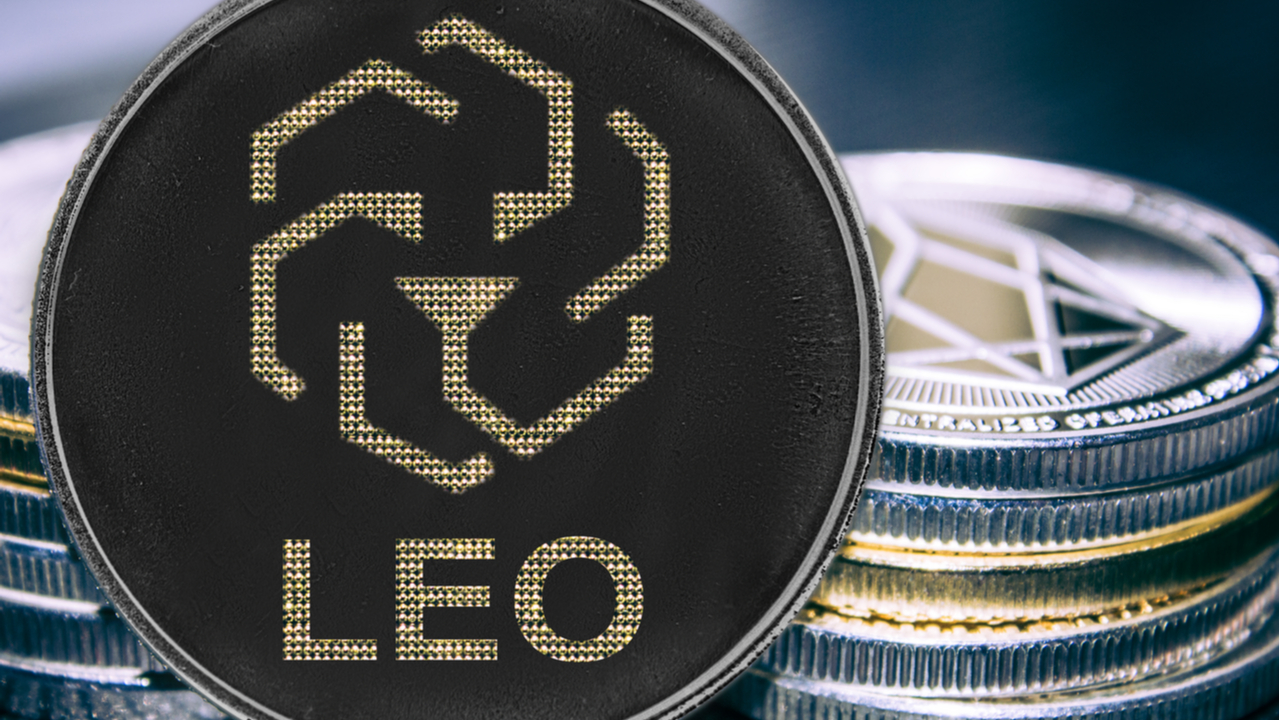
A widely followed crypto analyst says that Bitcoin (BTC) bulls and bears are about to get demolished by an incoming fakeout. In a new video update, crypto strategist Benjamin Cowen tells his 787,000 YouTube subscribers that BTC bulls and bears tend to get wrecked by a fake “death cross” during Bitcoin’s pre-halving year. Bitcoin’s halving […]
The post Benjamin Cowen Says Bitcoin Bulls and Bears About To Get Wrecked by ‘Death Cross’ Fakeout – Here’s His Outlook appeared first on The Daily Hodl.

Bullish investors profit from rising markets, bearish investors profit from falling markets, while "pigs," often suffer losses in risky conditions.
The crypto market is known for its high volatility, which refers to the rapid and unpredictable price fluctuations of cryptocurrencies. Market sentiment, recent news events, regulation changes, technological advancements, and general market demand and supply are just a few factors contributing to this volatility. Although volatility offers opportunities for gains, it also exposes traders and investors to high losses.
The adage “Bulls make money, bears make money, and pigs get slaughtered” is popular in the financial and crypto markets. It highlights several trading strategies and their outcomes.
Investors who believe prices will rise are known as “bulls” because of their upbeat attitude toward the market. They can profit by purchasing assets for less money and selling them for more. Bulls gain from price uptrends and positive sentiment in the crypto market.
On the other hand, “bears” have a pessimistic perspective and anticipate a decrease in prices. They generate revenue by repurchasing assets at a loss and then selling them at a profit. Bears profit in the cryptocurrency market when there are downtrends and negative sentiment.
“Pigs” stands for avaricious and excessively aggressive traders that take unwarranted risks to maximize earnings. They frequently disregard risk management techniques and hold onto profitable positions for too long, risking losses should market sentiment shift. Pigs are more likely to suffer substantial losses in periods of excessive volatility in the cryptocurrency market.
The significance of methodical trading and risk management makes this adage applicable to the cryptocurrency market. Both bulls and bears can benefit from price changes, but traders must be careful not to act primarily out of greed or fear since this can result in hasty decisions and significant losses.
Rising prices, a positive outlook and a broad conviction that the market will grow are all signs of a bullish crypto market. Bullish tendencies are influenced by various elements, including favorable news, technological developments, acceptance by established institutions and general market confidence.
To capitalize on upward price trends, investors employ several strategies, as explained below:
Investors that believe in cryptocurrencies buy and hold them for a long time, hoping their value will rise. This strategy is known as buy and hold (hodl).
Traders use technical analysis to identify potential entry and exit points for trades during upward trends using chart patterns, indicators, and historical price data.
Regardless of market conditions, investors consistently invest a certain amount of money into cryptocurrencies over time to average their purchasing prices using the DCA approach.
Momentum trading involves riding the wave of rising prices by purchasing assets that have demonstrated significant upward momentum, intending to sell them before the trend changes.
During the 2017 bull market, Bitcoin (BTC) had a significant price increase, and holders of the cryptocurrency before the rally made sizable gains.

Another example is the performance of Ether (ETH) during the 2020 boom in decentralized finance (DeFi). Those who bought into Ether during the bullish trend after seeing the potential of DeFi projects benefited from its significant rise.

Cryptocurrencies other than Bitcoin frequently see significant price spikes during increased market fervor. During these bull cycles, investors who diversified their holdings and found promising altcoins saw substantial gains.

Related: Bull markets make money, bear markets make opportunities
Declining prices, an unfavorable mood and the broad conviction that the market will continue to fall are the hallmarks of bearish market circumstances in the cryptocurrency market. Bearish tendencies are influenced by bad news, regulatory uncertainty, technology setbacks or general market pessimism.
To profit from downward price trends, traders can employ several strategies:
When bearish trends are projected to persist, traders look for prospective short-selling opportunities using chart patterns and indicators. In this approach, investors borrow cryptocurrencies and then sell them at the going rate, anticipating a price drop. They repurchase the cryptocurrencies at a lower price when the price falls and return them to the lender, keeping the difference as profit.
Some platforms offer inverse exchange-traded funds (ETFs) or derivatives that increase in value as the underlying cryptocurrency’s price decreases. They operate under the principle of adopting a position opposite to how the asset or index they track performs.
Trading options enable buyers and sellers of cryptocurrencies to transact at a predetermined price and within a specific time frame. To benefit from market falls, bearish investors might employ put options, which offer them the right to sell at a specific price.
Put options provide investors the right, but not the obligation, to sell a cryptocurrency at a fixed price within a given time frame, allowing them to profit from a decrease in the digital asset’s value.
Following the 2017 bull run, Bitcoin entered a bear market that lasted for several months. During this time, traders using inverse ETFs or short-selling strategies made money from Bitcoin’s falling price.

Many altcoins experienced significant price declines under lengthy bearish market circumstances. Traders who accurately predicted these patterns and utilized put or short options on specific altcoins could have made a profit.
The COVID-19 pandemic-related uncertainty in the world economy resulted in a dramatic drop in the cryptocurrency market in March 2020. The market collapse was profitable for bearish investors who expected this downturn and had short positions on cryptocurrencies.
Related: Market correction vs. bear market: Key differences explained
Pig-like behavior can lead to significant pitfalls and adverse investment outcomes. Investors must recognize the signs of “pig-like” behavior and learn from past incidents to avoid potential pitfalls.
Some examples of “pig-like” behavior include:
Pigs frequently succumb to the temptation of quick and big riches, taking on heavily leveraged positions or investing in speculative initiatives that have not been well investigated. They run a serious risk by engaging in this activity, especially in a market as volatile and unreliable as cryptocurrency.
Pigs may overtrade, repeatedly buying and selling cryptocurrencies, and chasing quick returns. This practice is known as “chasing losses.” Furthermore, they might try to recover losses quickly by taking bigger and riskier positions, which could start a cycle of chasing losses and taking impulsive actions.
Pigs frequently fail to use risk management techniques like diversifying their holdings or placing stop-loss orders. Due to their poor risk management, they are susceptible to significant losses during market downturns.

Greedy investors may be more prone to falling for fraudulent schemes or scams that promise irrationally high profits. Pigs are frequently the subject of these unscrupulous methods, and such events have been common in the cryptocurrency industry.
During market downturns, pigs may display a “fear of missing out” (FOMO) and act irrationally, making purchases at the height of a market cycle and suffering significant losses when prices later drop.
A cautious attitude toward both bullish and bearish markets, and implementing risk management strategies to guard against potential losses are necessary for a balanced approach to cryptocurrency investment. This strategy enables investors to exploit market opportunities, protect their wealth in the highly unpredictable crypto market, and make well-informed judgments.
A balanced strategy considers both market circumstances rather than concentrating on a bullish or bearish view. It involves a mix of long-term investments based on promising projects with growth potential (bullish) and short-term trades to capitalize on market downturns (bearish). This balance allows investors to profit from both upward and downward market changes.
Due to the market’s inherent volatility, risk management is crucial when investing in cryptocurrencies. Several efficient risk management strategies are explained as follows:
Maintaining a long-term perspective is essential when investing in cryptocurrencies. While short-term investments can result in fast gains, a balanced strategy emphasizes long-term development. Investors that see the long-term potential in projects can cling to their investments amid market downturns and prevent panic selling.
Because the cryptocurrency market is fluid, effective investors constantly review and revise their plans. A well-rounded and balanced investment plan involves remaining open to new concepts and modifying investment strategies in response to market conditions.
Collect this article as an NFT to preserve this moment in history and show your support for independent journalism in the crypto space.
 Digital currency markets, precious metals, and stocks dropped another leg down on Monday following the drop markets saw last Tuesday. Last week’s fall was one of the worst weeks in more than three months as market strategists believe a sizable Fed rate hike is coming this week. Bank of America’s analysts led by Savita Subramanian […]
Digital currency markets, precious metals, and stocks dropped another leg down on Monday following the drop markets saw last Tuesday. Last week’s fall was one of the worst weeks in more than three months as market strategists believe a sizable Fed rate hike is coming this week. Bank of America’s analysts led by Savita Subramanian […] On Monday, June 15, 2022, the price of bitcoin tapped a low not seen since mid-December 2020 as the price hit $20,080 per unit. A large number of crypto supporters are debating whether or not the drop is the market’s bottom or if the fall could lead to deeper losses. At the time of writing, […]
On Monday, June 15, 2022, the price of bitcoin tapped a low not seen since mid-December 2020 as the price hit $20,080 per unit. A large number of crypto supporters are debating whether or not the drop is the market’s bottom or if the fall could lead to deeper losses. At the time of writing, […] SOL neared a ten-month low on Tuesday, as bears returned to crypto markets during the session. Following a strong start to the week, markets turned red, with AVAX being another token to fall victim to the latest red wave. Solana (SOL) SOL was back in the red on Tuesday, as today’s sell-off pushed prices closer […]
SOL neared a ten-month low on Tuesday, as bears returned to crypto markets during the session. Following a strong start to the week, markets turned red, with AVAX being another token to fall victim to the latest red wave. Solana (SOL) SOL was back in the red on Tuesday, as today’s sell-off pushed prices closer […] Shiba inu’s (SHIB) 50% rise on Tuesday, seems to have inspired LEO bulls, who moved to push prices up by 61% in today’s session. The move comes as crypto markets consolidated yesterday’s gains. Biggest gainers Monday’s biggest loser, was Tuesday’s biggest gainer, as UNUS SED LEO was up by as much as 61% as of […]
Shiba inu’s (SHIB) 50% rise on Tuesday, seems to have inspired LEO bulls, who moved to push prices up by 61% in today’s session. The move comes as crypto markets consolidated yesterday’s gains. Biggest gainers Monday’s biggest loser, was Tuesday’s biggest gainer, as UNUS SED LEO was up by as much as 61% as of […] Ahead of Wednesday’s FOMC meeting, cryptocurrency markets were once again trading higher, with polygon (MATIC) being one of today’s biggest gainers. Despite the top 20 mainly trending upward, some in this list were mainly lower during the course of the session. Biggest Gainers Polygon (MATIC), which was one of the biggest gainers within the top […]
Ahead of Wednesday’s FOMC meeting, cryptocurrency markets were once again trading higher, with polygon (MATIC) being one of today’s biggest gainers. Despite the top 20 mainly trending upward, some in this list were mainly lower during the course of the session. Biggest Gainers Polygon (MATIC), which was one of the biggest gainers within the top […] The price of bitcoin is down 16% over the last 30 days and since the crypto asset’s all-time high (ATH) on November 10, 2021, bitcoin has lost more than 38% since it surpassed $69K per unit that day. Meanwhile, crypto advocates are furiously debating whether this is a bitcoin bear market or if the bull […]
The price of bitcoin is down 16% over the last 30 days and since the crypto asset’s all-time high (ATH) on November 10, 2021, bitcoin has lost more than 38% since it surpassed $69K per unit that day. Meanwhile, crypto advocates are furiously debating whether this is a bitcoin bear market or if the bull […] The crypto-economy has been sliding in value this week and during the last 24 hours, it has lost 2.5% dropping to $2.3 trillion. The leading crypto asset bitcoin has slid 4.8% during the last seven days and ethereum has dropped 11.7% last week. The downward spiral has cryptocurrency advocates questioning whether or not the bull […]
The crypto-economy has been sliding in value this week and during the last 24 hours, it has lost 2.5% dropping to $2.3 trillion. The leading crypto asset bitcoin has slid 4.8% during the last seven days and ethereum has dropped 11.7% last week. The downward spiral has cryptocurrency advocates questioning whether or not the bull […]
The SEC does not appear to have the appetite for more exotic Bitcoin futures products.
Reports are emerging that the U.S. Securities and Exchange Commission has rejected one, or possibly two, recent Bitcoin exchange-traded fund applications signaling that the regulator is not quite ready for more exotic futures products just yet.
Just a day or so after Valkyrie filed for a leveraged Bitcoin futures ETF and Direxion applied for an inverse fund for bears, the SEC appears to have vetoed them both.
On Oct. 28, Bloomberg’s senior ETF analyst Eric Balchunas referred to a Dow Jones alert indicating the Valkyrie leveraged fund had been shelved by the SEC. He added that the move was likely also to apply to the inverse fund application.
Looks like the SEC not having it w the levered (and likely inverse) Bitcoin futures ETFs. Can’t hurt to try tho. Had they gone through likely billion dollar trading vehicles in a few yrs. via Dow Jones pic.twitter.com/MspMRf3hL9
— Eric Balchunas (@EricBalchunas) October 27, 2021
On Oct. 26, ETF issuer Direxion filed for a Bitcoin Strategy Bear ETF that would enable speculators to buy futures that short the price of BTC. On the same day, Valkyrie filed for a leveraged BTC futures ETF that would have offered 1.25x exposure to the asset.
The Direxion product invested purely in futures, however, the Valkyrie one would have held futures, swaps, options, and forwards. Another Dow Jones alert reported the SEC only seems interested in direct futures products at the moment, funds that buy contracts from the Chicago Mercantile Exchange (CME).
The regulator does not seem keen to approve any products that invest in the asset itself or anything other than CME futures contracts at this stage. Balchunas confirmed:
“Would be interesting (and poss) if they let the Inverse one go through. That one was limited to futures. Valkyrie’s was a bit of a departure from that language.”
Related: Crypto breaks Wall Street’s ETF barrier: A watershed moment or stopgap?
ETF Store President, Nate Geraci, reported that two more ETFs had been applied for on Oct. 27 from AXS Investments. The SEC filings are for a regular Bitcoin Strategy ETF similar to the two already approved, and another shorting or inverse fund.
Another Dow Jones report states that Grayscale is confident that the SEC will be ready to approve a spot Bitcoin ETF by July 2022.
On Oct. 19, Grayscale filed an application with the SEC to convert its popular Bitcoin Trust (GBTC) into a spot fund that is backed by the asset itself as opposed to futures contracts.
Geraci, commented on the current lack of regulation over spot crypto markets, “So crypto markets/exchanges will be regulated by then? Seems ambitious.”
In related news, VanEck is making final preparations for the launch of its Bitcoin Strategy ETF which will trade under the ticker XBTF. On Wednesday, Balchunas said there was a “good chance” it could start trading on Friday, Oct. 29, but possibly Thursday.